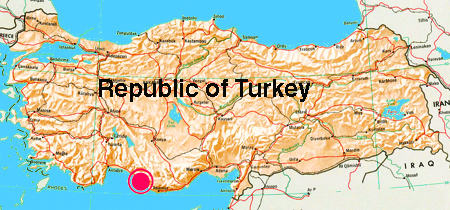Archaeological Research Project
Antiochia Ad Cragum
Antiocia History


The remains of Antiochia ad Cragum are located within the confines of the modern Turkish village of Güney, located approximately 12 kilometers SW of the town of Gazipaşa in the district of Antalya on the south coast. The site is extensive, encompassing an area of approximately three hectares. There still stand substantial remains of baths, a market, a colonnaded street with gateway, a large early Christian basilica, monumental tombs, and a temple, along with several unidentified structures. Antiochia is mentioned by several ancient sources as an important Roman commercial center and during the Byzantine era the city was a seat of a Christian bishopric.
The Antiochia ad Cragum Archaeological Research Project (ACARP) has been conducting excavations at the site since 2004. We have operated a field school since 2011 and so far over 150 students and volunteers have participated in the field school and helped to uncover the ancient city. Students from all over the United States, Canada, and Australia have joined the team. In addition, we are partnered with Turkish universities and archaeology students from Atatürk University participate annually.
